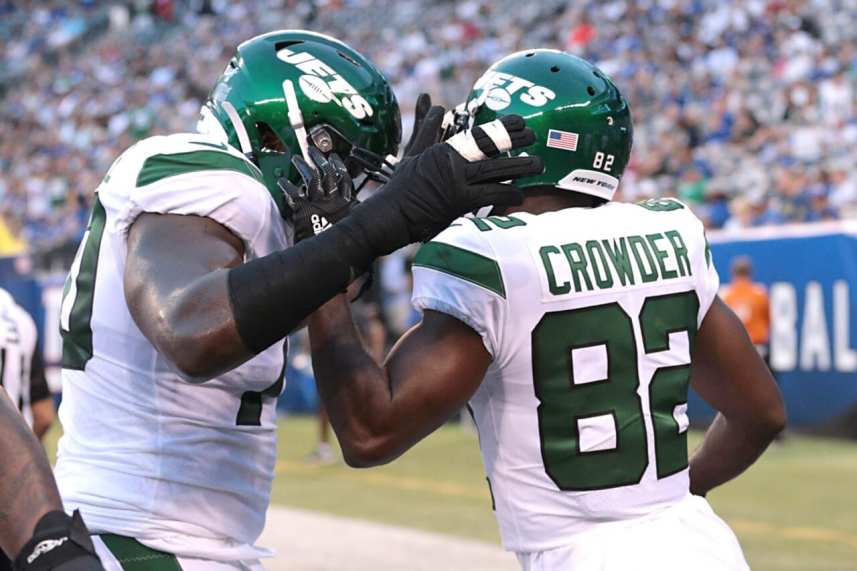
Despite a variety of prominent differences that separate these two rival dynasties, the New York Giants and the New York Jets oddly enough share a very interesting parallel entering this new decade: their offensive structure. If you haven’t noticed, both offenses are led by young quarterbacks in Daniel Jones and Sam Darnold, both offenses have elite running backs in Saquon Barkley and Le’Veon Bell, both teams have offensive lines that require major repairs, and both have wide receivers that collectively muster at best a B+ rating. Furthermore, the best wide receivers the Jets and the Giants have, mainly consist of slot receivers.
That being said, what makes this offensive parallel so fascinating comes down to the differences within the way each player influences their team. Every individual brings a distinct skill set, and essentially, it impacts their team’s offensive outcome and ability to succeed. Although both teams have wide receiver corps that are by no means ideal, both the Giants and the Jets were able to uncover bright talent amongst their B+ units that are worth keeping and holding onto. And for the Jets, that’s slot receiver Jamison Crowder.
With a passing offense that was 29th in the league last season, the newly acquired Jets wide receiver produced arguably his best season he’s had to date, and in the process, developed quite a special connection with his new quarterback Sam Darnold (ESPN). Crowder first came onto to the scene during his sophomore year in 2016 with his former team, the Washington Redskins, where he posted an impressive stat line of 67 receptions on 97 targets with 847 yards and 7 touchdowns (ESPN). But believe or not, Crowder pretty much matched his 2016 performance last season, finishing the year with 78 receptions on 122 targets with 833 yards, 6 touchdowns and no fumbles (ESPN). Moreover, the fact that Crowder’s first season with the Jets was just as good if not slightly better than his best season with the Washington Redskins, just gives you an idea of what kind of asset he can really become for this new-look Jets offense.
However, looking outside the numbers grants you a better perspective that illustrates what Crowder really brings to this offense. What’s so impressive about Crowder was simply how he was able to thrive with a supporting cast of wide receivers that struggled to establish any sort of consistency or playmaking ability alongside him. Outside of Robby Anderson, who placed 2nd on the team in receiving yards and touchdowns, the Jets had to resort to running back Le’Veon Bell as Darnold’s third passing option whilst trying to figure out ways to get subpar wide outs like Demaryius Thomas and Braxton Berrios to contribute and provide opportunities on the outside and within the slot (ESPN). Even tight end Ryan Griffin, who tied Anderson in 2nd with touchdowns on the year at 5, seemed to have difficulty providing his quarterback with any additional upside within their offensive system outside of being a big red zone target (ESPN).
But what continues to be the most bewildering detail of it all, is that Sam Darnold was able to have a better sophomore season despite having such a depleted wide receiving corp. Coming off a rookie season in 2018 where he threw for 2,865 yards with a completion percentage of 58% along with 17 touchdowns and 15 interceptions, he followed that up with 3,024 yards with a 62% completion percentage accompanied by 19 touchdowns and 13 interceptions (ESPN). It’s nothing drastic, but that’s still significant improvement considering what Darnold had at his disposal.
However, without taking anything away from Darnold’s sophomore season, it was evident that his passing success was spearheaded by none other than Jamison Crowder. Darnold realized how hard it was going to be to get good throws downfield with maybe a couple of seconds to do so before he was leveled by a linebacker or defensive lineman. So as a result, he had to resort to a short, quick, passing game with Crowder, and that essentially allowed him to move the chains throughout the season and establish a rhythm with the offensive success he was able to muster. At the forefront of Crowder’s talent in the slot is his exceptional route running and knack to gain extra yards after a catch (aka. YAC). Crowder was first amongst all Jets wide receivers in YAC last season with 357 yards (equating to 43% of his total yards on the season), which in addition, resulted in Crowder leading the team in first downs as well (ESPN).
At 5’9″ and only 26-years-old, Crowder continues to show such tremendous quickness and agility that’s guided by his nifty elusiveness and remarkable balance he’s able to use with his lower center of gravity (ESPN). And if the Jets want Darnold to continue to find success with his passing game, they need to build a better supporting cast of wide receivers around Crowder in order to allow him to capitalize on the space they can create together through the talent they bring collectively. Despite being excellent in the slot, Crowder can’t man the load by himself and it remains to be unclear if teammate Robby Anderson is the solution after coming off a 2019 season that was not very promising.
But while the Jets figure out what the future holds for their wide receiver corps, it’s safe to say that they have something to work with in Jamison Crowder. And although Crowder will be entering his 6th season in the NFL, his recent success and chemistry development with his new quarterback appears to be only the beginning of great things to come in 2020 (ESPN).